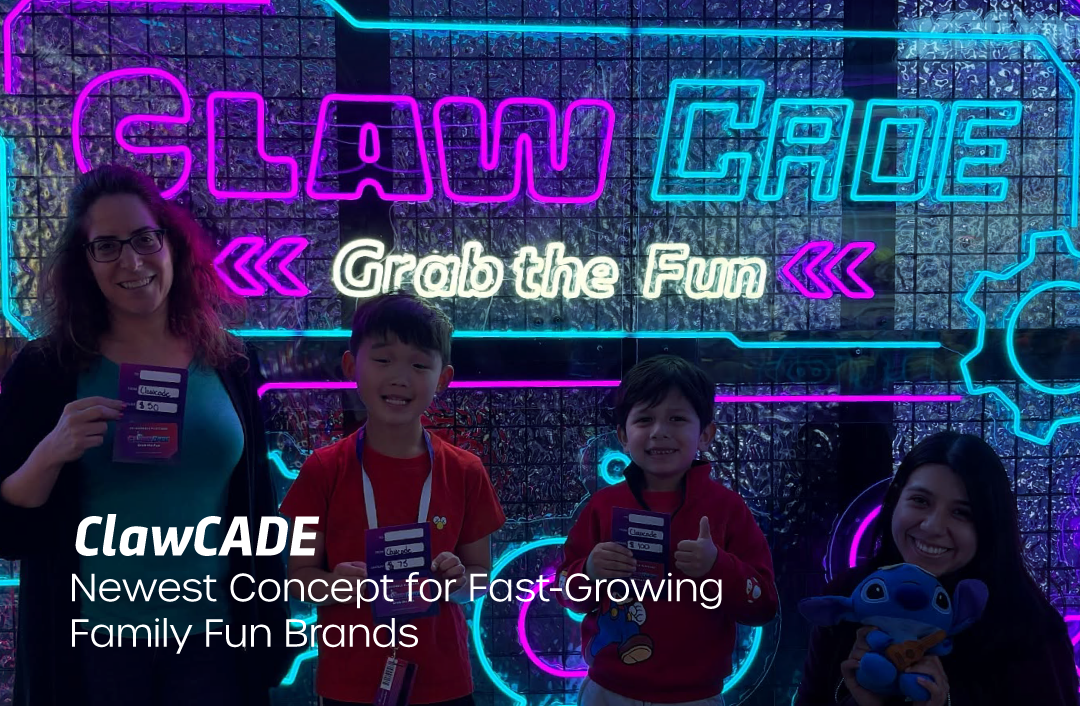A well-structured new hire onboarding program can help your facility build a strong team culture and an impressive guest experience.
Staffing is a major issue affecting many family entertainment venues these days. But when you do manage to hire new staff, failing to onboard them properly can not only derail your guest experience but also your employee engagement.
You have one shot to make a first impression with your guests – and your new team member(s). That’s why we wanted to revisit this important topic to help you build or strengthen your onboarding process and start new team members off on the right foot.
No. 1: Take a consistent approach. Every time.
Just like the other areas of your business, your onboarding and training programs’ results are directly tied to the amount of effort you put into developing your programs.
While some facilities have clear onboarding programs, many others fail to set their new team members up for success. Take time to consider what key information new hires need to receive and what skills and behaviors they must demonstrate before they start interacting with guests on their own.
You don’t necessarily have to write books, manuals, and lengthy job aids (sadly, few would read them if you did). But, at the very least, create a training checklist so that key pieces of training content don’t fall through the cracks and each new team member receives the same information.
No. 2. Go beyond job shadowing.
Providing new team members with the chance to pair up with your facility’s top performers provides great on-the-job training. It helps new staff learn skills and processes through their coworker’s mentoring while they gain confidence in their new roles as they begin to work with guests by themselves.
Be careful not to let your new team member fly solo too soon, either, or you risk upset guests and embarrassed staff. I’ve recently tried to order things in a cafe or buy something at a store only for the nervous and embarrassed team member to explain they didn’t know how to conduct a transaction at the point of sale.
Even though job shadowing is great, using this method alone leaves training up to chance, which often leads to whole chunks of content being left out if not encountered in on-the-job sessions.
Instead, build a blended onboarding program that includes job shadowing, classroom time, self-led learning video review (or production), practice sessions, learning games, and group and individual work to help your new folks feel supported and ready to thrive.
Be sure to include a knowledge assessment that each team member must complete before they go out onto the floor on their own. You could give a written quiz or use key questions and scenarios to create games and activities that will allow new team members to demonstrate their newly acquired knowledge. In fact, here’s one for free!
No. 3: Use the tools at your disposal.
Your facility management software should include a training mode that mirrors your unique business. Take full advantage of it by offering scenario-based practical training time in a controlled environment. Craft common scenarios team members will encounter and build in product and software training together. This will help team members gain product fluency and transaction speed so they can hit the ground running when they begin to work with your guests.
No. 4: Teach the what and how, but don’t forget the ‘why’.
When your facility is new, it’s easy to motivate team members through a cohesive orientation that establishes your site’s core values, service philosophy, and conduct standards. Over time, though, “momentum creep” may occur, with less focus on your facility’s why and more focus on the tasks new staff must master.
It’s essential that you build a strong foundation with every new team member by helping them connect with the heart of your business. Your culture and values should be front and center in hiring, orientation, throughout onboarding and should continue to be part of your day-to-day management language.
No. 5: Start communication flowing in both directions.
Feedback is a valuable, often overlooked piece of training – and management. Of course, team members need to know what they are doing well and what they need to improve, but that’s just half the equation.
Use onboarding to build a reciprocal feedback loop that establishes trust among your team. Encourage new ideas and empower staff to be creative in their roles. One way to do this is to use open-ended questions during training sessions, instead of closed questions that only have one answer. By doing so, you can assess knowledge gaps and give team members a chance to shine, especially when you praise their contributions and ideas. Additionally, questions that ask team members to consider a scenario and decide how they would approach it helps them develop critical thinking skills and build autonomy.
Throughout onboarding, check in with team members often by asking, “what questions do you have about topic or task?” When asked in an open-ended manner, you create an environment that suggests questions are welcome, and team members will begin to feel comfortable coming to you with questions or mistakes.
Lastly, don’t be afraid to ask for their feedback about the way they see the facility, a process or even how they’re enjoying the training thus far. Getting leadership feedback builds trusting teams, helps you deliver relevant training content, and allows you to hone your management style to meet the needs of all your varied team members. While some staff perform best with a lot of praise and positive reinforcement, you might find that others thrive better with straight-talk. The best managers are able to give the right coaching at the right time, and you can only do that by getting to know your team members.
No. 6: Beware of assumptions.
For some positions, it makes sense to have a basic competency profile of the skills that a new hire must already possess in order to be considered for a role, but, for frontline team members, your facility is likely one of their first jobs.
Imagine that your new team member arrives with a clean slate, and don’t assume they come with knowledge about things like phone etiquette, cleaning, or interacting with people outside their age group. You might think that sweeping or mopping a floor is an obvious “no-brainer,” but that assumption can set your new team members up to fail – and you up to be disappointed.
No. 7: Keep it going.
One last key mistake leaders make is thinking that training ends after a few weeks or months. The best managers find ways every day to teach and coach team members. Remember that for many, you are their first boss at their first job, and that gives you an opportunity – maybe even a responsibility to help mold them into the employees and citizens of your community in the years to come.
Training may take many forms and not just focused on tasks in your facility – from mentorship to life skills. But if you take care of your team members, they’ll take care of your guests – and your business.
Download our sample training checklist and knowledge assessment, and let us know how you will use it in the comments or on Twitter.
Search Resources
Subscribe to Email Updates
Featured Resources
Blogs //
6 Self-Service Opportunities to Delight Your Guests Without Losing Your (Personal) Touch

News //
CenterEdge Now Integrates with PourMyBeer to Help FECs Serve Up Success

News //
ClawCADE is Newest Concept for Fast-Growing Family Fun Brands

Blogs //
Data-Driven Decisions: Using Management Software to Optimize Staffing & Guest Flow

Posts by Topic
- Advantage Payments (7)
- Brand Management (19)
- Business Growth (81)
- Capacity Management (2)
- CenterEdge News (28)
- Client Interviews (8)
- Credit Card Processing (3)
- Data & Reporting (12)
- Digital Signage (1)
- Event Management (20)
- Facility Management (10)
- Food & Beverage (8)
- Guest Experience (34)
- Guest Management (20)
- Holiday Season & Promotions (5)
- Industry Events (10)
- Inventory Management (1)
- Loyalty Programs (8)
- Marketing Tips (24)
- Operations (1)
- Point of Sale (10)
- Product Launch (11)
- Productivity (5)
- Profitability (35)
- Redemption Management (1)
- Sales (35)
- Season Passes (1)
- Team Training (60)
- Waivers (2)

Leave a Comment